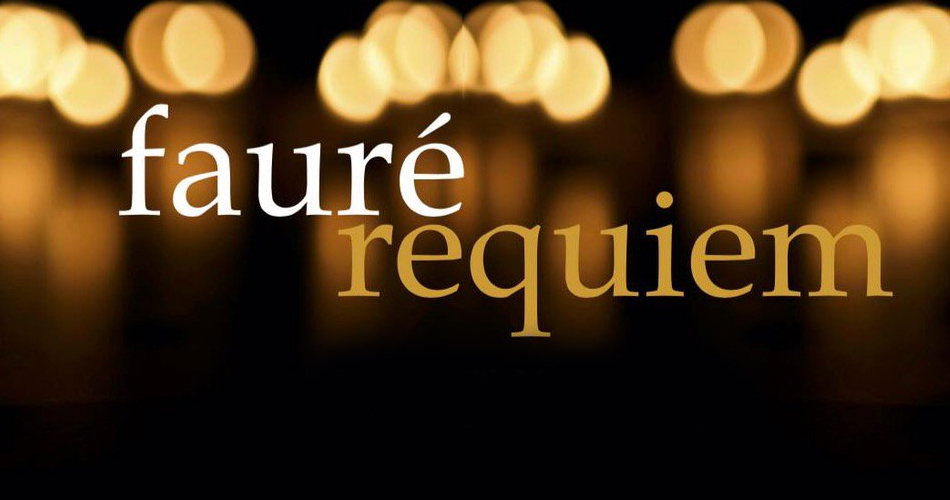Reflection for Faure Requiem Service
As I read the prayers and readings for the service tonight, interspersed with translations of the words the choir is singing in the Requiem, two themes strike me. The first is the here and now dimension of eternal life, and the second is the interplay of darkness and light in the experience of grief and loss.
On the back of our service sheets is a quote from Henri Nouwen: “Eternal life is life in and with God and God is where I am, here and now.” Jurgen Moltmann wrote of the “here and now” aspect of eternal life, describing God’s time as non-linear, always here and now, and therefore intersecting at every point with our linear experience of time. Let’s look through the readings in our liturgy for quotes that illuminate an understanding of eternal life in immediate presence with us. Karl Rahner speaks of a calm that we experience when a period of mourning is done. He describes that calm as “a sign that part of us lives now already in eternity, with our loved living dead.” In the passage quoted in the liturgy tonight, Moltmann says that we sense the presence of the dead “whenever we become aware that we are living ‘before God’, and whenever we sense their presence, we feel the divine ‘wide space’ which binds us together.” After my father died, we all had a sense of his closeness to us, almost as if we could reach across a thin place into that other life. His quirky humour somehow accompanied us in our grieving, paradoxical and comforting. Moltmann speaks of the dead as de-restricted, and I believe we felt my father’s joyous sense of release into that wide space, in which the illness that had restricted him was gone and he was free.
Is there anything in our Scripture which supports the intuitive awareness of eternal life here and now expressed by Rahner and Moltmann, these two great theologians of the twentieth century? In the passage from Revelation 21, the mystical vision is of a new heaven and a new earth that seem to replace rather than intersect with the present reality, wiping away all death, grief and pain. However, the voice from the throne speaks in the present tense: “God’s home is now with his people,” and “I am making everything new.” In our gospel passage, we have the contrast between Martha’s understanding that her brother “will rise again in the resurrection on the last day”, contrasted with Jesus’ statement in the present, “I am the resurrection and the life.” The revival of Lazarus and his release from the tomb is a sign of the present availability of new life through the life, death and resurrection of Jesus.
Yet in the death and revival of Lazarus, the death and resurrection of Jesus, we see the stark interplay of darkness and light in the experience of loss and grief. Jesus who raised Lazarus from the dead had yet to go through his own horrific suffering and death. Later in the story, when Jesus saw Mary and the gathered people weeping, Jesus is disturbed in spirit and deeply moved, and he begins to weep. Were the tears for his own grief that Lazarus has died, or does he weep at the reproach that both Mary and Martha express: “If you had been here, my brother would not have died.” Perhaps he cries in empathy with those who are grieving, or does he weep in part for what he knows he must undergo and what it will do to all associated with him? Jesus’ tears were perhaps for all that and more. In returning to Bethany, Jesus knew he was placing himself within range of those who wanted to kill him. When that decision was made, Thomas said to the other disciples: “Let us also go, that we may die with him.” Even the new life given to Lazarus was threatened, as we see in the next chapter, where the chief priests are plotting to put Lazarus to death as well. Life, death and resurrection are intrinsically interconnected. Loss and grief often seem like the end of life as we know it, yet out of the darkness and pain of mourning, transformation can emerge. I have experienced that personally, when out of my grief for my father’s death, a call to ministry emerged. In the experience of my father’s death, I had the sense of having said “Yes” to God about something, without clearly knowing what, a bit like signing a blank cheque.
This intermingling of darkness and light, of death and loss and transformation is what I see reflected in the imagery of the requiem. There we hear of darkness and the black abyss, fire and judgement on the one hand, and mercy, eternal rest, and perpetual light on the other. Although I can’t relate to the medieval theology of the requiem words, I can relate to these contrasting states as metaphors for our experience as we go through times of tragedy, death, loss, pain and misery. The requiem words are satisfying to sing and hear in their dramatic darkness – in evoking the abyss and the black pit, they represent the depression and disorientation we feel when the bottom drops out of our world. There is something cathartic in the words and music of turmoil, judgement and dread that may help release the anger, self-blame, and fear of our mortality that sometimes accompany grief. Yet the healing power of the music always draws us towards the promise of light, mercy and transformation.

